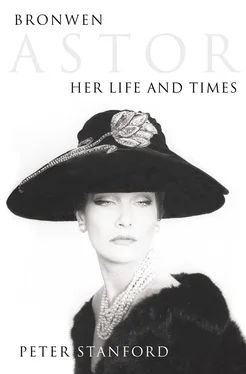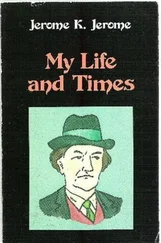It was a time when government and electors alike convinced themselves that Britain was back where it had been in 1939. ‘It’s just like pre-war’ was the phrase on everyone’s lips – before Suez, economic reverses, angry young men, the Lady Chatterley trial and finally the Profumo scandal destroyed the illusion and ushered in the new, brutal and classless world of the 1960s. In this interval a particular sort of upper-class conduct, confidence and style were the dominating social and cultural goals. Harold Macmillan’s governments, containing such a heavy contingent of peers that on paper they seemed like pre-1914 administrations, contributed to the process. The look that Bronwen Pugh came to embody – aristocratic, detached, elegant – reflected the general mood and had an emblematic quality.
The London fashion world did have one up on Paris in that it had adopted the American system of agents for model girls. In the States Eileen Ford, the godmother of model agents, had built up her agency from scratch in 1946, representing two of the most important US models of the decade, Suzy Parker and Dorian Leigh. In Paris such innovations were not allowed for fear that they would become little more than glorified escort agencies, but in London they advertised in the phone book and were run by outwardly frightening but often benign men and women who provided the respectability and parental-style security that ushered middle-class girls like first Jean Dawnay and later Bronwen into the profession.
With her teaching career behind her and her heart set on fulfilling the frivolous dream she had shared with Erica, Bronwen went about getting herself on one of the agency’s books. The first name she tried was Pat Larthe. Dawnay, trail-blazer in the new wave of post-war British models, provided an uncomfortable picture in her autobiography of Larthe’s working methods. At the dawn of her career, Dawnay, like Bronwen almost a decade after her, had nervously presented herself at Larthe’s office in London’s Covent Garden only to find ten other hopefuls in the waiting room, clutching their portfolios and fiddling with their hair.
When she was finally summoned into the inner sanctum she was greeted by a tough, theatrical woman, sheltering behind a vast telephone-laden desk. ‘The interview was short and humiliating. I showed Miss Larthe my pictures. She barely seemed to glance at them before telling me I was too ordinary, that modelling was the toughest, most soul-destroying profession in the world, and that girls who had far more than I in the way of looks and figure got nowhere.’ Dawnay was reduced to tears. That appeared to be Larthe’s intention, perhaps – to take the most charitable option – calculating that it was better if it was done by her now rather than by someone else further down the line. Having destroyed the younger woman’s self-confidence, she could then appear her protector. She took Dawnay under her wing, directed her first to favoured photographers, then got her bookings at the less glamorous end of the market – shows at Scarborough hotels – and finally helped her to make the leap to the top London houses.
Bronwen’s first impression of Larthe was equally unfavourable. ‘I just turned up in her office and said, “I want to be a model.” She looked at me and said bluntly, “You’re too tall and you squint.’” Most hopefuls would have turned and walked out. A few months previously so would Bronwen, but in the aftermath of Erica’s death she clung to the idea of modelling as her salvation. She could not afford such dramatic gestures when Larthe potentially held the key to success. ‘Then Pat asked me to walk across the room and I must have done something right. She said she wouldn’t put me on her books, but she’d teach me how to be a model.’
Bronwen accepted this less-than-overwhelming offer without a second thought. She and another hopeful would turn up after hours at Larthe’s office every evening for a week. First they were instructed on walking in the correct way. You had to place one foot exactly in front of the other and swing your hips – ‘but not all that sashaying they do today,’ says Bronwen. ‘We had to be “ladylike but exaggerated”.’ Then there was some good old-fashioned practice with books on the head to improve balance and poise.
Equally important was the correct form for the catwalk-not then usually a raised platform but simply a walkway between rows of chairs ending in what was and remains known as ‘the cheese’ or ‘le fromage’ because of its resemblance to a slab of Camembert. To succeed as models, according to Ginette Spanier, the great Parisian couture house directrice of the 1950s, girls had to ‘swish their bottoms and stretch their legs out straight in front like a race horse, pirouetting at corners as though dancing an old-fashioned waltz.’
Other evening sessions covered make-up – at which Bronwen was a novice. At that time model girls were expected to turn up with their own shoes and do their own hair and make-up. Then there were hints on showing clothes off to best advantage – ‘wearing a jacket off your shoulders, that sort of thing’. And finally, another taste of the outwardly more buttoned-up 1950s, there was the etiquette of taking off and putting on clothes quickly, discreetly and demurely.
As Pat Larthe had spotted, nature had given Bronwen a spectacular walk. The lessons may have given it a little more polish, but it remained highly individual and one of her most devastating assets, something that was to make critics, designers and men sit up and take notice of her. Eugenia Shepherd, fashion doyenne of the New York Herald Tribune , later described her as that ‘husky, Welsh mannequin’ who ‘drags a coat down a runway as if she had just killed it and were taking it to her mate’.
The same openness that had made her a quick learner when Margaret Braund had fashioned St Joan out of a gawky schoolgirl at Dr Williams’ helped her to digest Larthe’s lessons in double-quick time. Despite her progress, at the end of the week Bronwen still found the agent adamant that she would not take her on. Her squint and her height would make her too hard to place. The current vogue was for petite girls with the gamine ‘little boy look’ – Jean Dawnay, its epitome, was five foot five and a half – rather than lanky, bony, long-legged women like Bronwen, who came in at just under six foot.
Yet once again, Bronwen displayed a remarkable single-mindedness. She couldn’t do much about her height, but the squint was easily cured. Raiding her savings, buoyed up by financial assistance from her parents, she went back to the surgeon who had treated her as a child and he operated once more on the lazy muscles behind her left eye. After a couple of weeks’ recuperation she was out knocking on the agents’ doors once more. Her friends marvelled at her perseverance. ‘I remember being full of admiration for her confidence and more so her resilience,’ says Diana de Wilton. ‘I just kept thinking I know I couldn’t have done that and that the very first time someone said no, I would have given up. But it was a new Bron. She wasn’t in the mood to be put off.’
Those same attributes also enabled her to ride out her family’s reaction to her decision to throw in teaching and try her hand at modelling. The Pughs were not frivolous people and the news that their daughter wanted to abandon her career in the classroom and spend her money on what must have seemed to them like a hopeless whim cannot have been easy to swallow. First she had refused Oxbridge. Then she had gone to drama school, but just when it finally looked as if she was back on the rails, working as a teacher, here she was giving it all up. They could not understand her motivation and she, still in shock over Erica, could not explain it-to them or even to herself. However, the Pughs were not so heavy-handed as to express their disappointment that she had abandoned what had been her anointed role. Indeed, whatever their misgivings, they helped her pay for her eye operation. They had taught their daughters independence, had deliberately avoided giving them either gender or class stereotypes, and realised that they were now reaping what they had sown. They may even have understood on some unspoken level, that modelling – like dressing-up and acting before it – fitted in with Bronwen’s penchant from earliest days for eye-catching gestures, the ‘look at me’ syndrome that she puts down to feeling insufficiently wanted as a child.
Читать дальше












